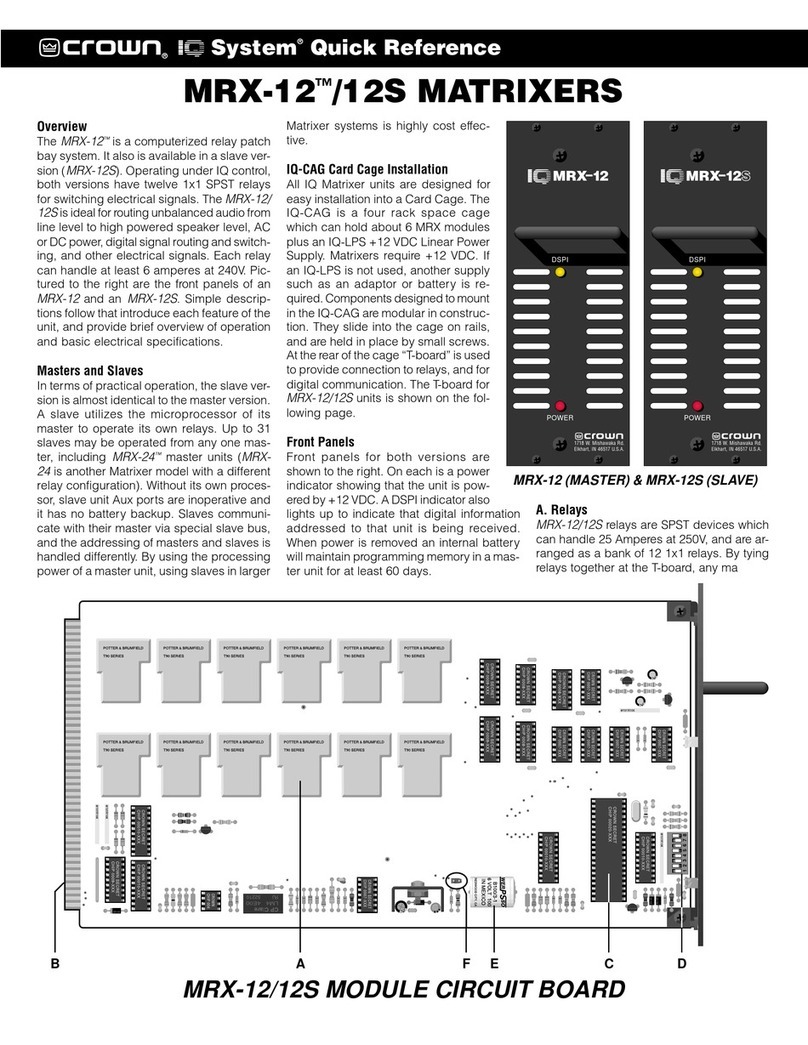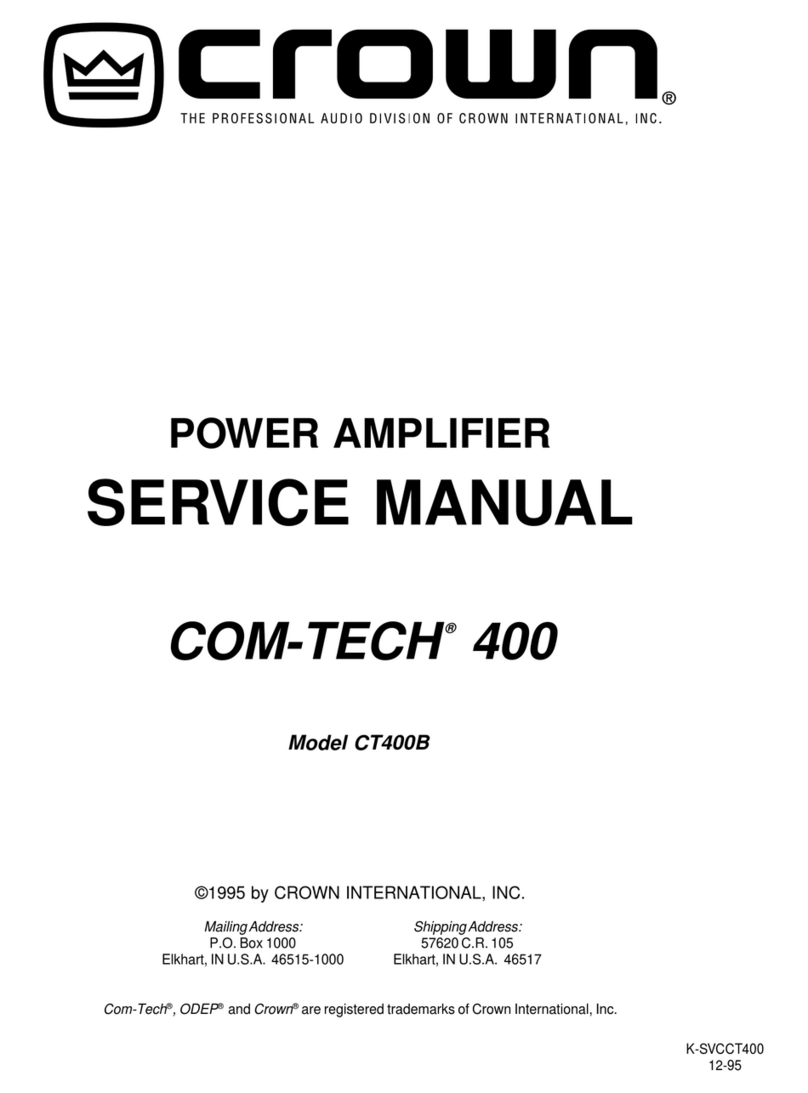Crown D-150 User manual
Other Crown Amplifier manuals

Crown
Crown XTi 1000 User manual

Crown
Crown 180MA Operator's manual
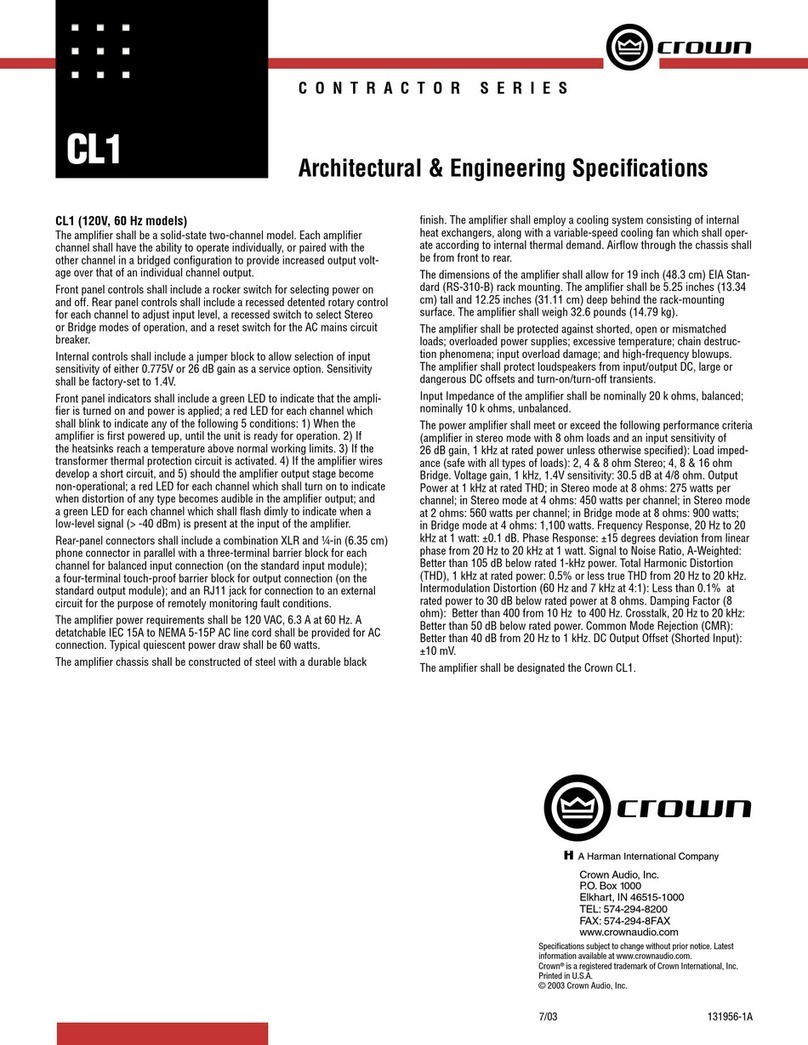
Crown
Crown CL1 User manual

Crown
Crown CH1 User manual
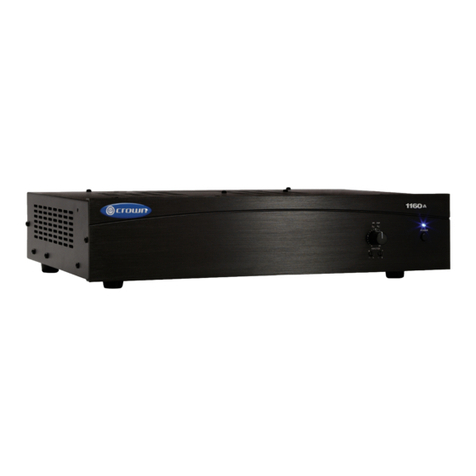
Crown
Crown 1160A User manual
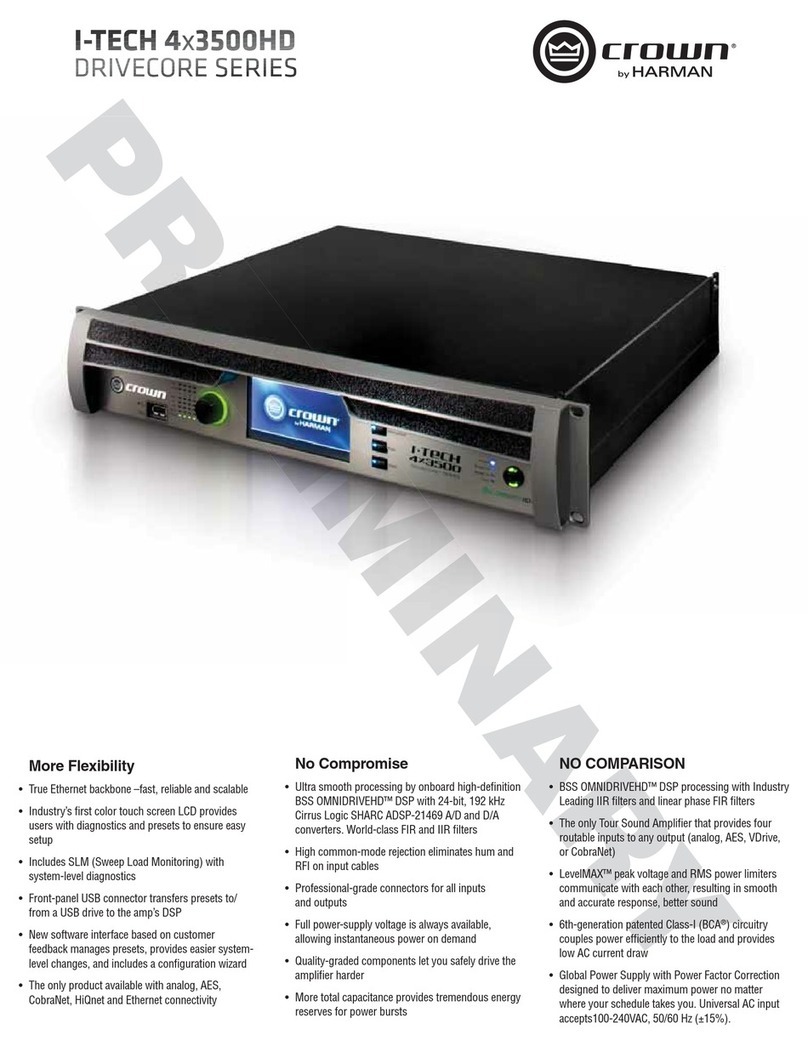
Crown
Crown I-Tech 4x3500 HD User manual
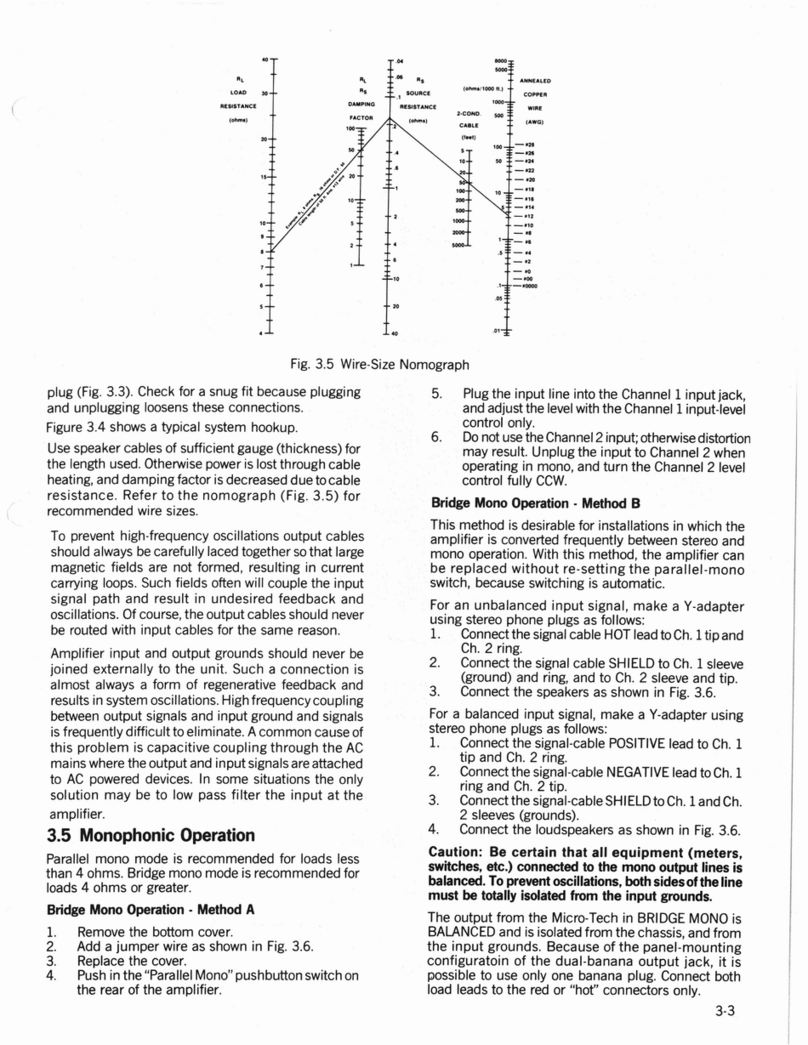
Crown
Crown Micro-Tech MT-1000 Manual
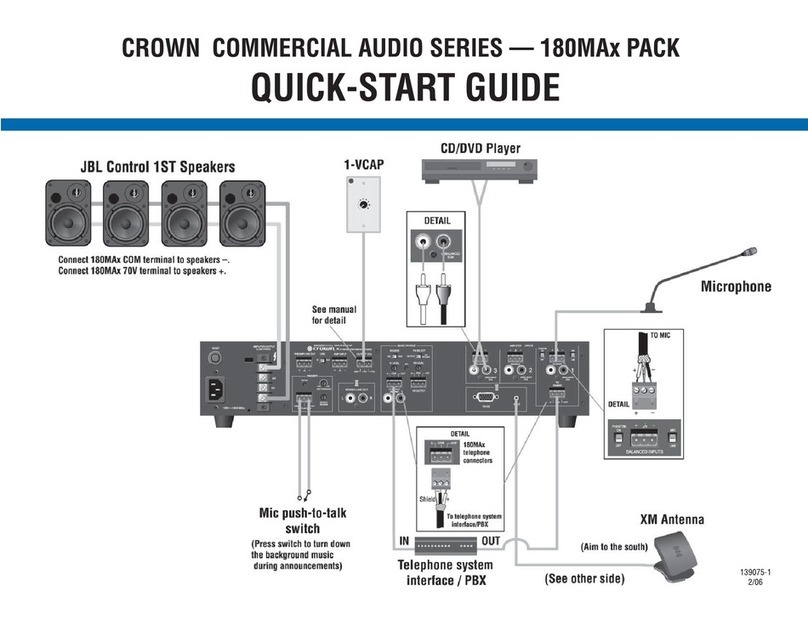
Crown
Crown 180MAx Pack User manual

Crown
Crown XLS 602 User manual

Crown
Crown 135MA User manual

Crown
Crown CE-2000A Guide
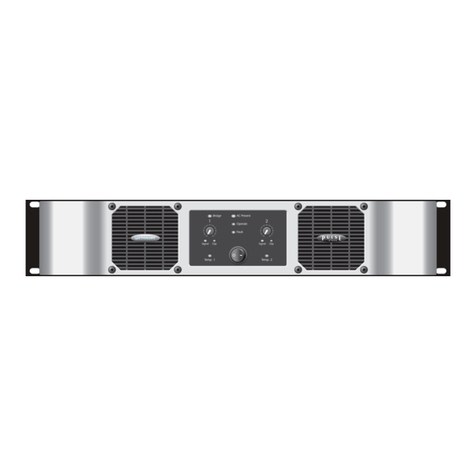
Crown
Crown 2650 User manual
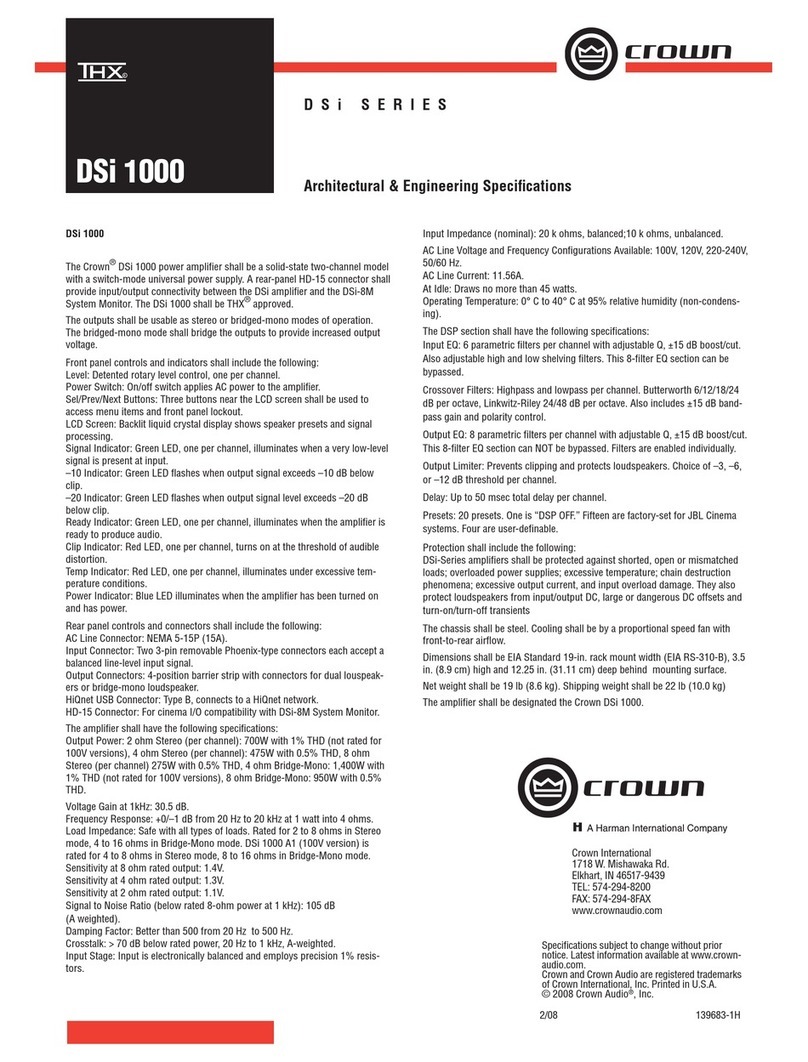
Crown
Crown DSi 1000 User manual
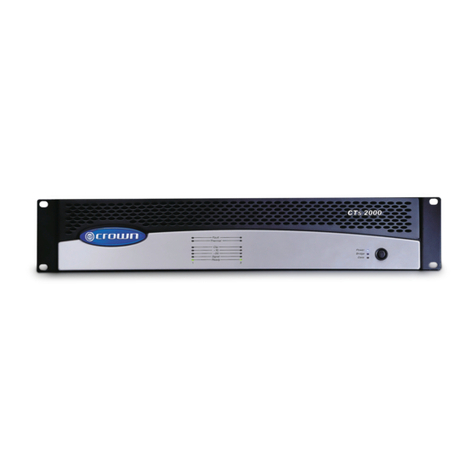
Crown
Crown CTs 2000 User manual
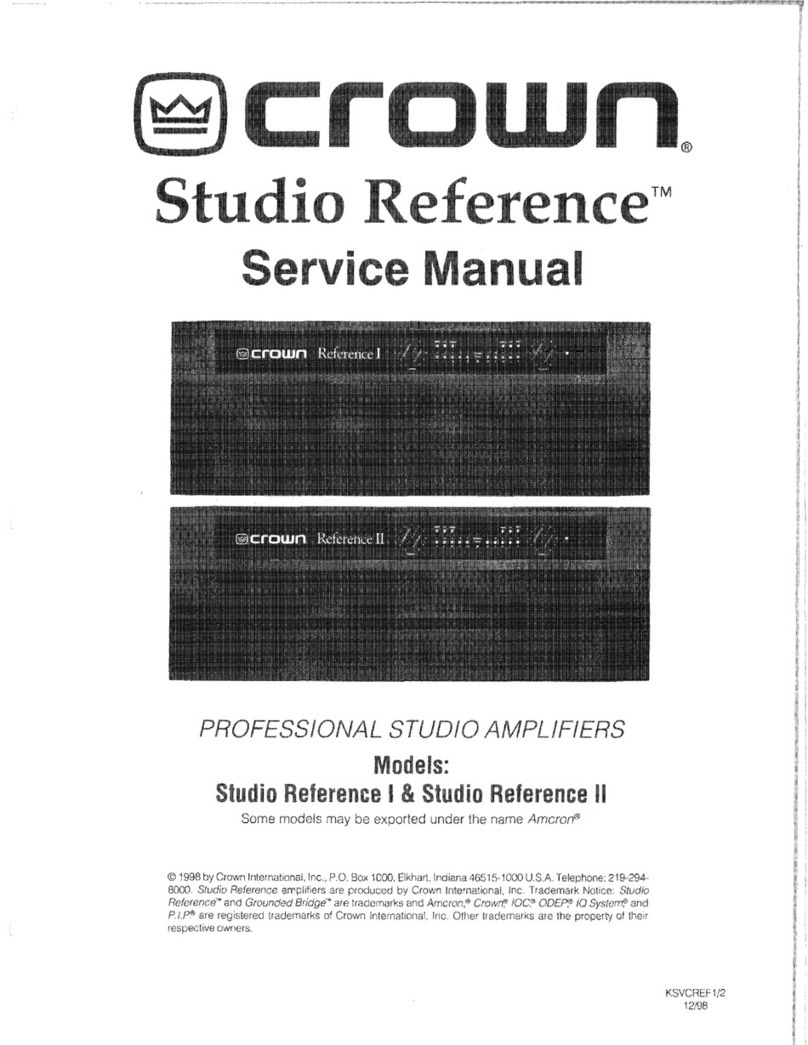
Crown
Crown Studio Reference I Studio Reference II User manual

Crown
Crown D-150A User manual

Crown
Crown CP660 User manual

Crown
Crown Micro-Tech 1200 User manual
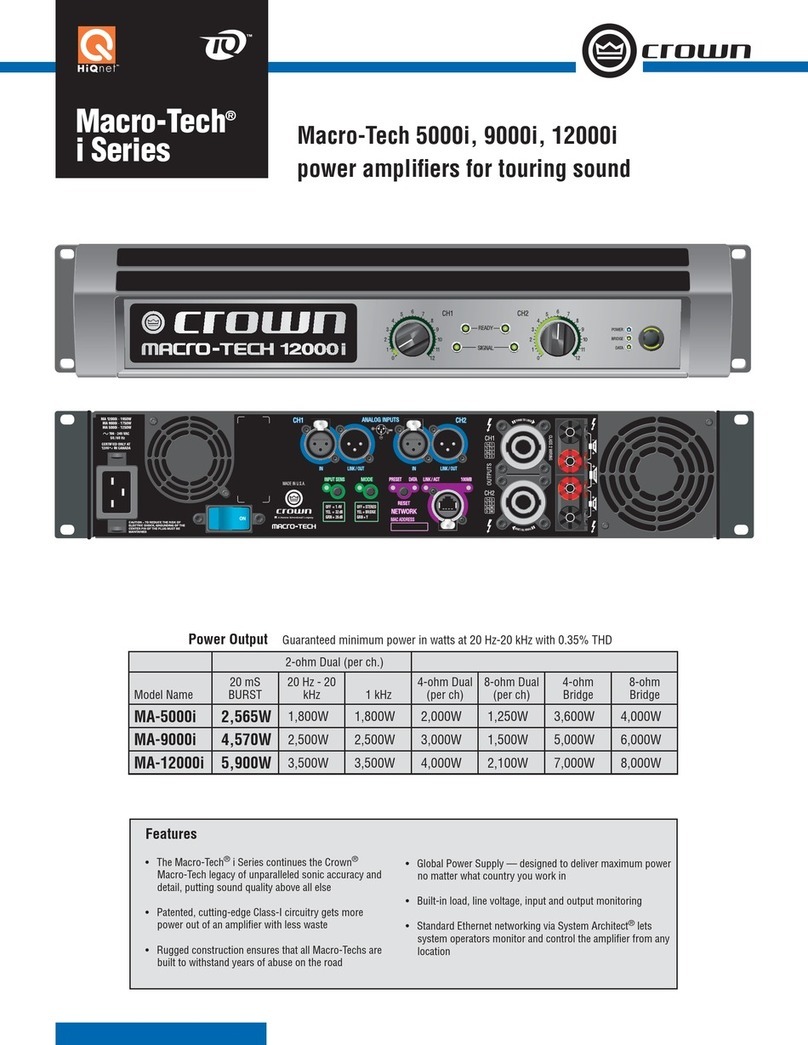
Crown
Crown MA-12000i User manual

Crown
Crown I-Tech I-T6000 Manual
